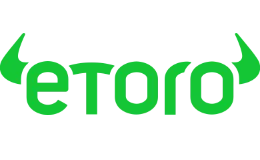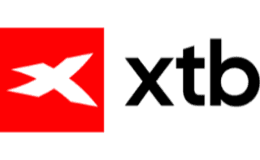
Fractional shares
Free to open an account
The key thing to understand is that the Nasdaq is a stock exchange in the US, meanwhile, the Dow Jones is a stock market index.
So, the Nasdaq is where thousands of companies are publicly listed (with a tilt towards tech stocks) and the Dow Jones (full name Dow Jones Industrial Average) is basically a list of 30 blue-chip stocks listed on the Nasdaq and New York Stock Exchange (NYSE).
A stock exchange is where the shares of companies are listed, while an index is a list or collection of stocks. Think of a stock exchange as Spotify and think of an index as a playlist — that’s the basic difference between them.
Although the Nasdaq is a stock exchange, there are index funds and exchange-traded funds (ETFs) that copy all or part of the Nasdaq.
For example the Nasdaq Composite index follows most stocks listed on the Nasdaq exchange or the Nasdaq 100 is made up of the 100 largest companies on the exchange.
This can be confusing, but most of the time when people talk about investing in a Nasdaq fund or ETF, they’re likely talking about one of these indices. As the Nasdaq Composite is an index, it’s easier to compare it to the Dow Jones.
The Dow Jones is an index of 30 prominent US companies. It’s price-weighted, so the share price of each company impacts the proportion of the index that it represents. The Dow index covers all industries except transportation and utilities.
The companies in the Dow Jones are chosen by representation from The Wall Street Journal and S&P Global, so they can be subjective and it’s becoming an outdated measure to look at the US market.
Here’s what the top holdings in each index currently looks like (as of May 2024):
The following companies are constituents of both the Nasdaq 100 (i.e. not the full Nasdaq) and the Dow Jones Industrial Average. This information is updated daily.
| Stock | Industry |
|---|---|
| Microsoft Corporation (MSFT) | Software |
| Amgen Inc (AMGN) | Drug manufacturers |
| Apple Inc (AAPL) | Consumer electronics |
| Amazon.com Inc (AMZN) | Internet retail |
| Honeywell International Inc (HON) | Conglomerates |
| NVIDIA Corporation (NVDA) | Semiconductors |
| Cisco Systems Inc (CSCO) | Communication equipment |
The Nasdaq Composite is larger than the Dow Jones by a pretty substantial margin. The Dow Jones is only 30 stocks while the Nasdaq Composite is more than 2,500 stocks. The Nasdaq 100 also contains more stocks than the Dow, 70 more to be precise (the name kind of gives it away).
The Nasdaq Composite’s market capitalisation is likely very close to the Nasdaq stock exchange’s market cap, which is around $23 trillion (around £19 trillion).
Meanwhile, the Dow Jones has a market capitalisation of around $12 trillion (about £9 trillion). When you consider that the Dow Jones is just 30 stocks and the Nasdaq Composite contains thousands, you get a sense of how large the stocks are in the Dow Jones.
The Dow Jones only gives you access to 30 big players on US exchanges while the Nasdaq Composite gets you access to a wider range of companies, including smaller stocks.
The Nasdaq Composite has a lot of technology stocks, with this sector taking up half of the index. It’s quite spread out across other sectors as well, but this is a key one. Technology is also the largest sector in the Dow Jones, with around 20% of holdings coming from the information technology sector.
These trading apps allow you to invest in companies within the indices directly or to invest in a fund or ETF that copies one of the indices.



Here are some of the best-performing Dow Jones and Nasdaq funds according to justETF:
| Fund | Icon | 5-year performance (to Feb. ’24) | 1-year performance (to Feb. ’24) | Link to invest |
|---|---|---|---|---|
| Lyxor Dow Jones Industrial Average (DJEL) |  | 68.82% | 10.45% | Invest with IGCapital at risk |
| iShares Dow Jones industrial average (CIND) |  | 68.67% | 10.07% | Invest with eToroCapital at risk |
| Fund | Icon | 5-year performance (to Feb. ’24) | 1-year performance (to Feb. ’24) | Link to invest |
|---|---|---|---|---|
| Amundi NASDAQ 100 (ANXG) |  | 164.88% | 35.86% | Invest with IGCapital at risk |
| Lyxor NASDAQ 100 ETF (NASL) |  | 163.76% | 35.78% | Invest with IGCapital at risk |
| iShares NASDAQ 100 (CNX1) |  | 161.79% | 35.15% | Invest with eToroCapital at risk |
| Invesco NASDAQ 100 (EQSG) |  | N/A | 35.97% | Invest with IGCapital at risk |
| Xtrackers NASDAQ 100 (XNAQ) | N/A | 35.27% | Invest with IGCapital at risk |
All investing should be regarded as longer term. The value of your investments can go up and down, and you may get back less than you invest. Past performance is no guarantee of future results. If you’re not sure which investments are right for you, please seek out a financial adviser. Capital at risk.
![]()
These trading apps allow you to invest in individual stocks found on each index or use a fund like an ETF to invest in the whole index.
To make comparing even easier we came up with the Finder Score. Costs, features, ease and range of investments across 30+ platforms are all weighted and scaled to produce a score out of 10. The higher the score the better the platform – simple.
Read the full methodologyNasdaq is a stock exchange in the US, known for having a high proportion of technology stocks. A popular Nasdaq index is the Nasdaq Composite, which comprises most of the stocks listed on the Nasdaq stock exchange. The Dow Jones is an index of 30 US stocks — typically large blue-chip companies. It’s a hand-picked index, while the Nasdaq Composite includes all eligible stocks.
All investing should be regarded as longer term. The value of your investments can go up and down, and you may get back less than you invest. Past performance is no guarantee of future results. If you’re not sure which investments are right for you, please seek out a financial adviser. Capital at risk.
Learn how to invest in the Nasdaq 100 from the UK, including where to access it and some of the best funds and ETFs available to investors.
Here’s your ultimate guide to navigating the world of global investing from the comfort of your sofa or even on your phone on the go.
The three best-known US indices go head to head. Search by company, review performance over time and understand key differences.
Learn how to invest in the Euro Stoxx 50 from the UK and discover some of the best Euro Stoxx 50 index funds and where you can invest in them.
Find out more about the Nikkei 225, some companies that make it up and how you can invest in the Nikkei 225.
Find out what makes up the Hang Seng index. We’ve compiled the different ways that you can invest in Hang Seng, such as through ETFs.
Find out how to invest in DAX, the 40 largest companies on the Frankfurt Stock Exchange. We’ve compiled some ETFs and other ways you can invest.
In a nutshell, an index fund is a low-cost portfolio of shares and other assets that tracks a financial or stock market index. They’re a popular investment choice in the UK and worldwide.
Learn how to invest in the S&P 500 from the UK and discover some of the best S&P 500 index funds and where you can invest in them.
The FTSE 100 is the UK’s most famous stock index. Here’s how you can invest in it today.